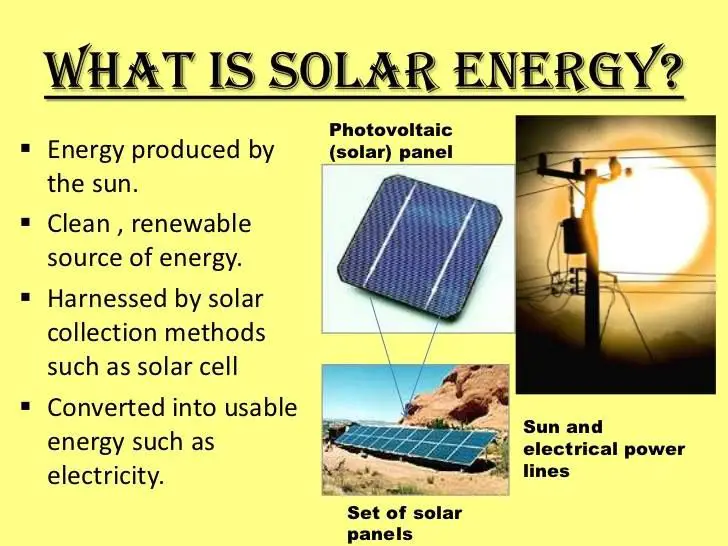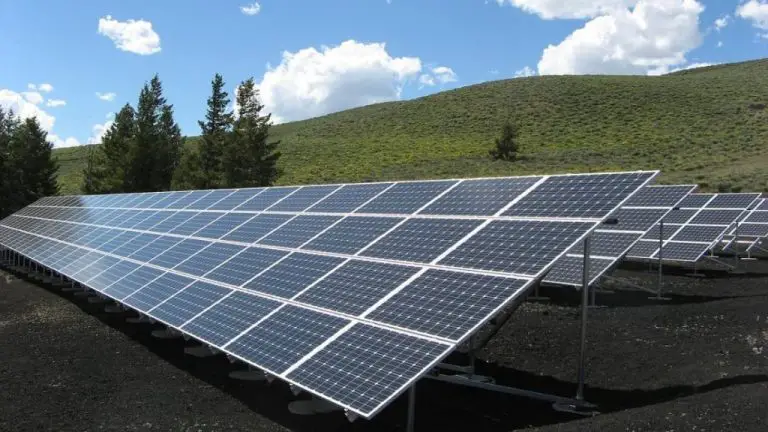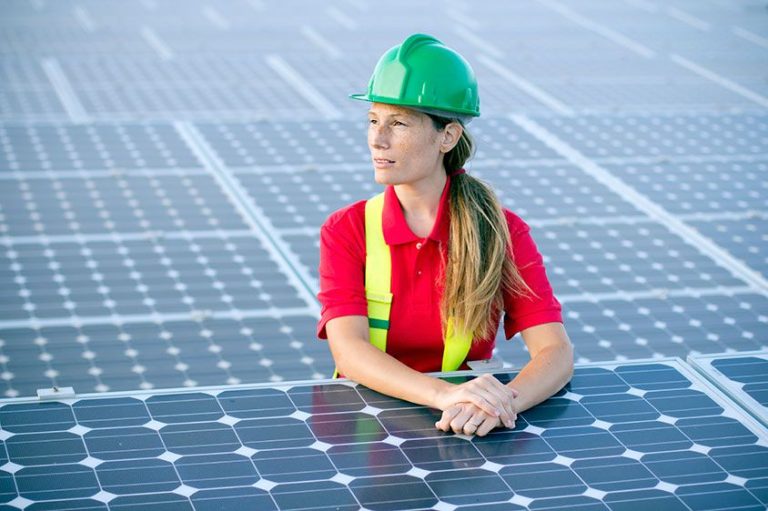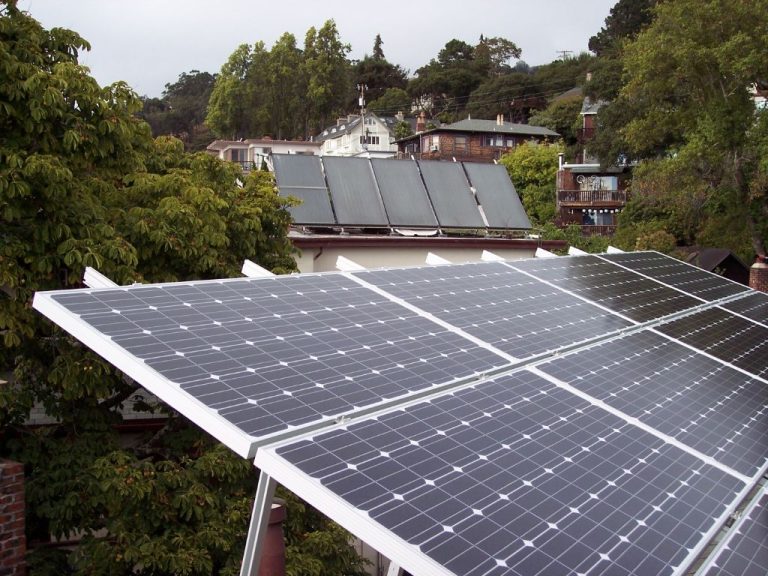What Is The Wasted Energy In A Solar Panel?
What is Wasted Energy in Solar Panels?
Wasted energy in solar panels refers to the energy that is lost during the process of converting sunlight into electricity. All solar panels have some inefficiency, meaning not all of the sunlight can be utilized to generate electricity. There are several sources of energy loss that contribute to the wasted energy.
The most fundamental issue is that conventional solar cells can only absorb and convert a portion of the solar spectrum into electricity. Photons with lower energy than the solar cell’s bandgap will pass through the cell, while higher energy photons are wasted as heat. This unavoidable spectrum loss limits the maximum efficiency of single-junction solar cells to around 30-35%.
Additionally, not all the absorbed sunlight gets converted into electrical current. Some is dissipated as heat during the generation and conduction of electricity. Solar cells also can reflect a portion of the incoming sunlight rather than absorbing it. These reflection and thermal losses account for another major chunk of wasted energy in solar panels.[1]
How Solar Panels Work
Solar panels, also known as photovoltaic or PV panels, work by directly converting sunlight into electricity. They are made up of many smaller units called solar cells which contain a photovoltaic material – usually silicon – that is specially treated to form an electric field (National Grid, 2022). When sunlight hits the solar cells, the energy from the photons of light knocks electrons loose from their atoms. The electric field within the cell then forces these electrons to flow in a certain direction, generating a flow of electricity (National Grid, 2022).
This electricity generated from each solar cell is collected by wiring and flows to an inverter which converts the DC power into AC electricity ready for household use (National Grid, 2022). The more sunlight that hits the solar cells, the more electricity that is produced. A typical home solar panel system is made up of about 20-40 panels which produce enough energy to run most appliances and help offset power drawn from the grid.
Sources of Wasted Energy
There are several sources of energy loss and inefficiency in solar panels that reduce the amount of sunlight converted into usable electricity. Understanding these sources can help improve solar panel designs and installations.
Reflection loss occurs when some light reflects off the solar panel surface instead of being absorbed. Typical solar panels reflect around 10-20% of incoming sunlight. Using anti-reflective coatings on solar panels can help reduce this reflection loss and improve efficiency (Source).
Thermal loss happens when solar cells heat up, causing some efficiency loss. Solar panels can reach temperatures over 50°C on hot days, reducing efficiency by 10-25%. Proper solar panel cooling and ventilation can minimize thermal losses (Source).
Resistive losses in wires and connections account for around 2% power loss during transmission from panels to inverters. Shorter wire runs and thicker wires diminish these wiring losses (Source).
Inverters also contribute around 2% conversion loss when changing solar DC electricity into AC current. High-efficiency inverter models can help maximize power output.
Reflection Losses
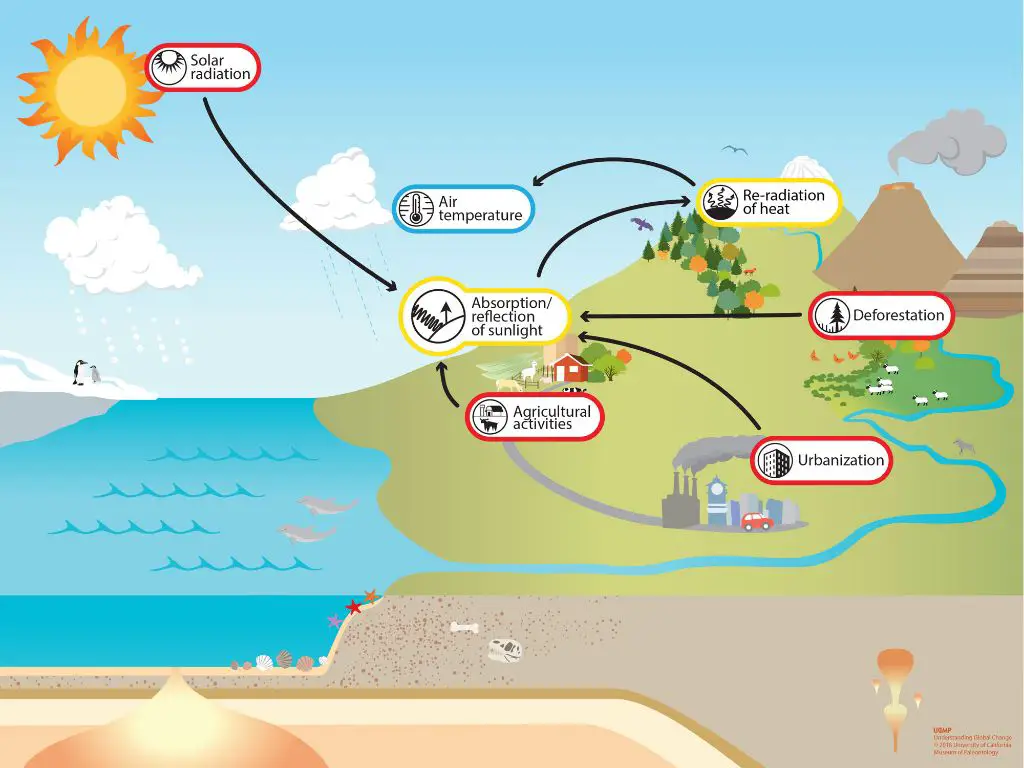
Reflection losses occur when incoming sunlight reflects off the solar panel’s glass cover instead of passing through to the solar cells. The light energy that is reflected away is essentially wasted, as it is not absorbed and converted into electrical energy by the solar cells.
When sunlight hits the solar panel, part of it passes through the glass cover and part of it is reflected. The amount of light reflected depends on the refractive index of the glass cover. Typical solar panel glass has a refractive index around 1.5, which means about 4% of incoming sunlight is reflected away at each interface – both at the top of the glass and at the bottom surface where it meets the encapsulant material.
So in total, around 8% of incoming sunlight is lost due to surface reflections before reaching the solar cells. This reflected light bounces off the panel and is not available for electricity generation, reducing the overall efficiency.1
Anti-reflective coatings can be applied to the glass to reduce the amount of reflection and allow more light energy to pass through to the solar cells. This is one method used to minimize optical losses and increase solar panel efficiency.
Thermal Losses
One of the main sources of wasted energy in solar panels is from thermal losses. Solar cells convert light energy into electricity, and any energy not converted is released as heat. As solar panels heat up their temperature rises, which reduces the voltage and efficiency of the solar cells. Higher operating temperatures can lead to efficiency losses of 10-25% in crystalline silicon solar panels (source 1). The most significant factors that contribute to thermal losses are:
- Solar irradiation – More intense sunlight leads to higher temperatures.
- Ambient temperature – Hotter surrounding air reduces the panel’s ability to cool itself.
- Wind – Low wind speeds decrease convection cooling.
- Panel structure – Thicker panels and darker colors absorb more heat.
There are several ways to mitigate thermal losses in solar panels, like using reflective coatings or rear-surface cooling (source 2). But controlling operating temperature is an ongoing challenge for maximizing solar panel efficiency.
Wire Losses
As electricity travels through wires from solar panels to devices, some energy is lost due to resistance in the wires. The longer the wires, the more resistance and voltage drop occurs. Thinner wires also have higher resistance than thicker wires.
The power lost in wires is calculated using P=I2R, where P is power loss, I is current, and R is wire resistance. Resistance (R) depends on the wire material, length, and thickness. Voltage drop (Vdrop) depends on current (I), resistance (R), and length (L) based on Vdrop = I x R x L. 1
To reduce wire losses, installers use thicker wires and locate inverters close to panels. However, thicker wires cost more. Installers balance wire sizes to limit losses while controlling costs. Proper wire sizing tools calculate resistance and voltage drop to optimize wire thickness.
Inverter Losses
Inverters play a critical role in solar PV systems by converting the DC electricity generated by solar panels into AC electricity that can be used in homes and on the grid. However, this conversion process comes with some inevitable energy losses.
The most common type of inverter used in solar installations is the string inverter, which typically has an efficiency rating of 95-98% (SolarSME). This means that for every 100 kWh of DC electricity entering the inverter, 3-5 kWh is lost during the AC inversion process. These losses are converted into waste heat energy as electricity flows through the inverter components.
Newer inverter technologies like microinverters and power optimizers can help improve efficiency by 1-2% compared to string inverters. But there will always be some level of energy lost when converting DC to AC current. Careful inverter selection, sizing, and installation can help minimize inversion losses.
Other Inefficiencies
In addition to the major losses outlined above, solar panels can also lose some efficiency from minor factors like wiring inefficiencies, module mismatch, and resistive heating in the cells. Wiring and connections between panels and to the inverter can cause small resistive losses. When solar panels are wired together in an array, minor manufacturing differences can cause some panels to output slightly less power than others, reducing the total output. Resistive heating from the flow of current can also marginally reduce cell efficiency at high operating temperatures. While individually small, together these minor factors can result in a few percentage points of reduced efficiency.
Improving Efficiency
There are several ways to reduce the amount of wasted energy in solar panels and improve their efficiency.
One method is to use higher efficiency solar cell materials like monocrystalline silicon or thin-film cadmium telluride, which can convert over 20% of sunlight into electricity (1). Newer materials like perovskites have shown potential to reach even higher efficiencies above 25% in lab testing (2).
The orientation and tilt of solar panels can also be optimized to maximize their exposure to direct sunlight during peak hours, reducing reflection losses. Regular cleaning of panels and ensuring they are free from shading, dirt, and debris improves absorption.
Using maximum power point tracking (MPPT) devices with inverters ensures the system operates at the optimal voltage to extract the most power available from the panels. Upgrading to a higher efficiency inverter can also help minimize conversion losses.
Adding solar reflectors to concentrate more sunlight onto panels can increase output. Combining solar with batteries stores unused energy for later use when needed, reducing wasted excess electricity.
Overall, a combination of improved materials, proper installation and siting, regular maintenance, and smart power management can help maximize solar panel efficiency and minimize wasted energy.
(1) https://news.mit.edu/2021/photovoltaic-efficiency-solar-0224
(2) https://sistinesolar.com/how-to-increase-solar-panel-efficiency/
Conclusion
In conclusion, there are several sources of wasted or lost energy in solar panels that contribute to less than 100% efficiency. The main sources of energy loss are reflection losses at the solar cell surface, thermal losses as energy is converted to heat, resistive losses in wires, and losses in the inverter. Even the most advanced solar panels on the market today only achieve around 20% efficiency on average.
Wasted or lost energy refers to any energy from sunlight that is not converted into usable electrical energy by the solar panel. This lost energy may be reflected off the panel surface, converted to heat, or lost as electricity moves through wires. Overall, today’s solar panels lose about 80% of the sunlight energy that hits them, primarily due to conversion inefficiencies and thermal loss.
While wasted energy remains a challenge for solar technology, ongoing advances continue to improve efficiency and reduce losses. With further research and innovation, the amount of sunlight that can be utilized by solar panels is likely to increase over time.

